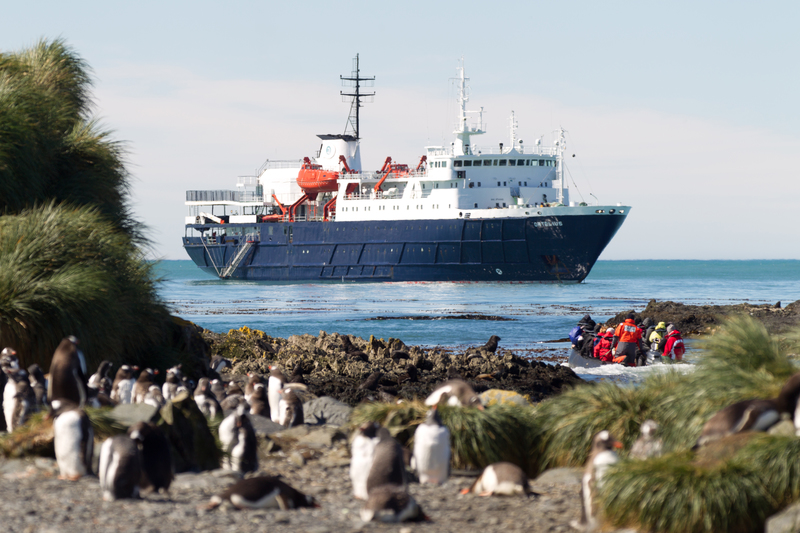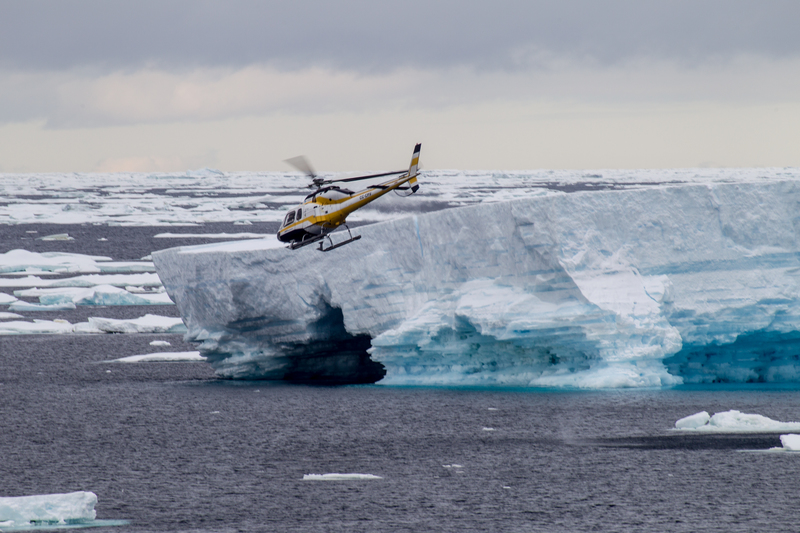Crossing the Antarctic Circle, we arrive in the stunning area of Crystal Sound, where we hope to see a range of Antarctic wildlife and witness the sheer scale of the Antarctic landscape, with its vast expanses of ice and towering mountains. If conditions allow, we will land on Detaille Island, a listed historic monument and former research station. The station remains as it was left, offering a rare glimpse into the early days of scientific research in Antarctica, set against breathtaking scenery.
Pourquoi-Pas Island / Horseshoe Island
A visit to one or both of these islands further deepens our appreciation of the pioneering expeditions of the past. Pourquoi-Pas Island, named by the famous explorer and scientist Jean-Baptiste Charcot, is often home to penguins and seals. It offers a hike ashore and the opportunity to see glaciers that shape the island’s topography.
Horseshoe Island is also home to an abandoned research base, where the "Mary Celeste"-like buildings provide an insight into a bygone era of scientific exploration. This was a site of pioneering research and long-distance expeditions using dog teams, and the remains of the kennels can still be seen. This island is a favorite among our staff and guests, offering breathtaking views of the vast landscapes and harsh conditions that once served as home for researchers. The landscape of Horseshoe Island never disappoints.
Stonington Island
A site of significant research activity from the 1930s to the 1970s, Stonington Island was home to both American and British research bases. It features a range of historic buildings and artifacts, telling the story of Antarctic exploration. Once connected to the Antarctic mainland by snow and ice, this sobering site now stands as a powerful reminder of Antarctica’s remoteness and its delicate balance between human history and untamed wilderness. The wildlife, vast natural beauty, and man-made structures combine to make this an unforgettable place, sure to leave a lasting impression.
Red Rock Ridge
A landing site on the Antarctic mainland, Red Rock Ridge is visible from some distance, with its striking red-hued rocks standing out against the icy backdrop. If conditions are favorable, we will attempt a landing here. Adélie penguins have a breeding colony in the area, and we also hope to see seals and Antarctic shags, which nest nearby.
























